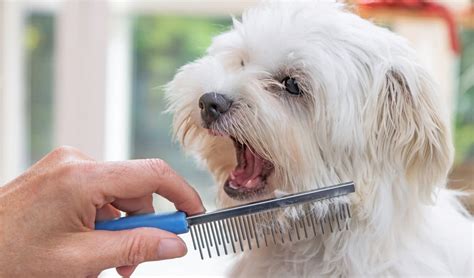How To Groom Your Dog: A Comprehensive Guide
Grooming your dog isn't just about making them look good; it's crucial for their health and well-being. Regular grooming helps prevent matting, skin infections, and parasites, while strengthening your bond with your furry friend. This comprehensive guide will walk you through the essential steps, regardless of your dog's breed or coat type.
Essential Grooming Supplies
Before you begin, gather the necessary tools. Having everything readily available makes the process smoother and less stressful for both you and your dog. You'll need:
- Brushes: A slicker brush for removing loose hair and mats, a bristle brush for smoothing the coat, and a comb for detangling. Choose brushes appropriate for your dog's coat length and type. Long-haired breeds will require more specialized tools than short-haired breeds.
- Shampoo and Conditioner: Use a dog-specific shampoo and conditioner, as human products can be harsh on their skin. Select products designed for your dog's coat type (e.g., moisturizing shampoo for dry coats, clarifying shampoo for oily coats).
- Towels: You'll need plenty of absorbent towels to dry your dog thoroughly after bathing.
- Nail Clippers: Regular nail trimming is crucial to prevent overgrowth and discomfort. Choose clippers specifically designed for dogs.
- Ear Cleaning Solution: Use a dog-specific ear cleaning solution to gently clean your dog's ears. Never use cotton swabs, which can damage the eardrum.
- Toothbrush and Toothpaste: Regular brushing helps prevent dental disease. Use a dog-specific toothpaste, as human toothpaste is toxic to dogs.
Step-by-Step Grooming Process
Grooming should be a positive experience for your dog. Start slowly, making it a fun and rewarding interaction.
1. Brushing: The Foundation of Good Grooming
Regular brushing is the cornerstone of dog grooming. This removes dead hair, prevents matting, and distributes natural oils, keeping their coat healthy and shiny. Brush your dog thoroughly, paying attention to areas prone to matting, such as behind the ears, under the legs, and around the tail. For long-haired breeds, this step may take longer and require more patience.
2. Bathing: Keeping Your Dog Clean and Healthy
Bathing frequency depends on your dog's breed and lifestyle. Some dogs may only need bathing every few months, while others may require more frequent baths. Use lukewarm water and a dog-specific shampoo. Thoroughly rinse all shampoo to prevent skin irritation. Dry your dog thoroughly with towels to prevent them from getting cold.
3. Nail Trimming: Preventing Overgrowth
Regular nail trimming is crucial for your dog's comfort and health. Trim the nails carefully, avoiding the quick (the pink part of the nail containing blood vessels and nerves). If you're unsure how to trim your dog's nails, consult a veterinarian or professional groomer.
4. Ear Cleaning: Maintaining Ear Health
Clean your dog's ears regularly using a dog-specific ear cleaning solution. Gently wipe the inside of the ear flap, avoiding pushing anything deep into the ear canal. If you notice any redness, swelling, or discharge, consult your veterinarian.
5. Teeth Brushing: Promoting Dental Hygiene
Brush your dog's teeth regularly using a dog-specific toothbrush and toothpaste. Start slowly, allowing your dog to get used to the process. This helps prevent plaque buildup and dental disease.
Tips for a Stress-Free Grooming Experience
- Start early: Begin grooming your dog from a young age to get them used to the process.
- Make it positive: Use treats and praise to reward good behavior.
- Be patient: Some dogs may be more resistant to grooming than others. Take your time and be patient.
- Consult a professional: If you're unsure about any aspect of dog grooming, consult a veterinarian or professional groomer.
By following these steps and incorporating regular grooming into your dog's routine, you'll contribute significantly to their overall health, happiness, and well-being, strengthening your bond in the process. Remember, consistency is key!
